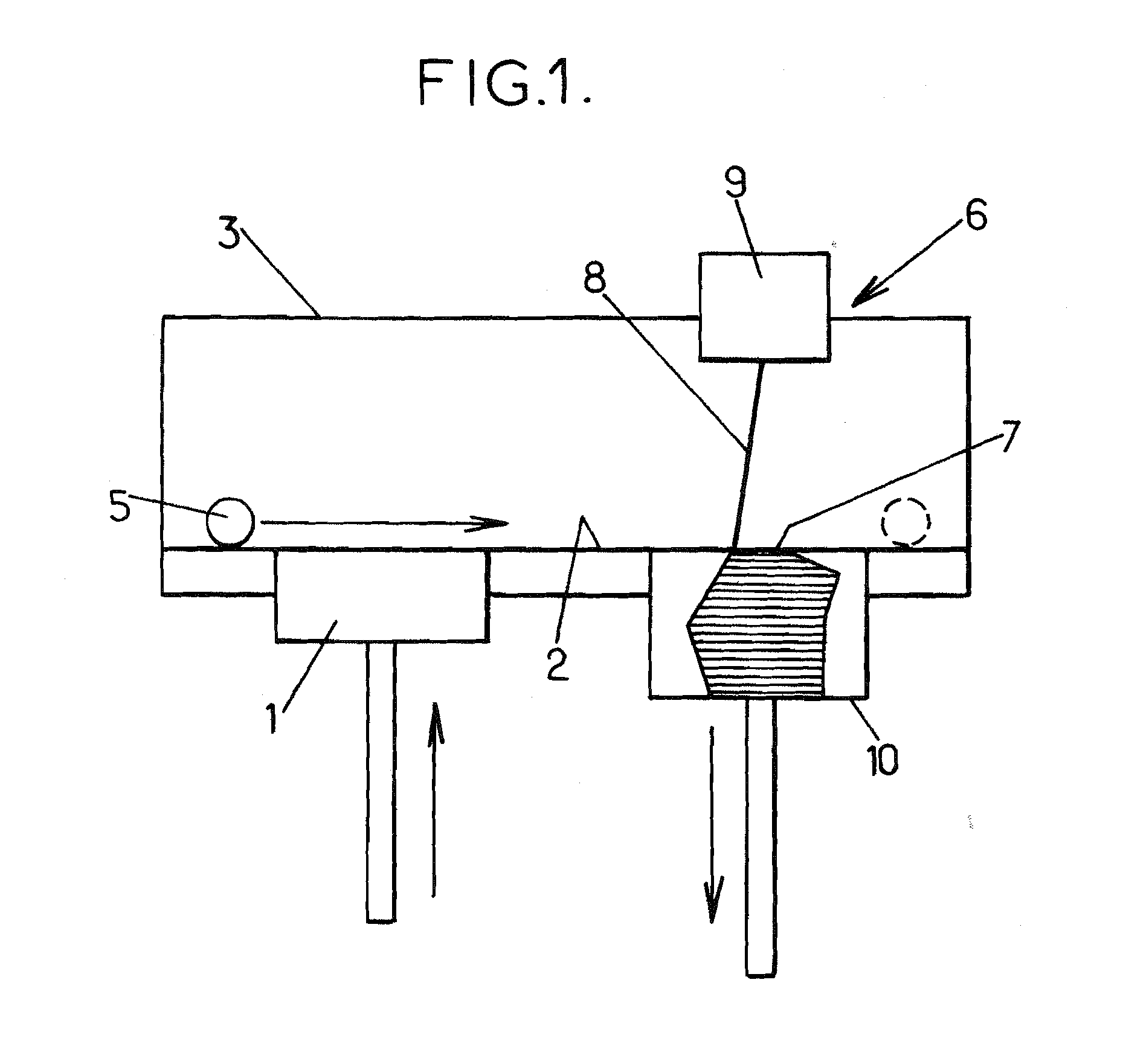Biomedical device, method for manufacturing the same and use thereof
- Summary
- Abstract
- Description
- Claims
- Application Information
AI Technical Summary
Benefits of technology
Problems solved by technology
Method used
Image
Examples
example
[0093]The machine used may be a Phenix® PM100 device commercialized by Phenix Systems®.
[0094]A ceramic powder of hydroxyapatite having a granulometry 10 to 25 micrometers (commercial reference Medicoat® / Medipure® 20-15, purity>95%) is placed in a container 1 so that it can be layered on a plate 2. The tray 2 may be located in the furnace 3 of the machine 6. The powder may be heated to 800° C. The plate 2 may be supported by a tray 10 movable up and down. The powder is layered with a ceramic roll 5 at a place 7, where it will be processed by a laser beam 8 release from a galvanometric head 9 (computer directed optical susceptible to direct a laser beam with high speed and high precision). The thickness of the resulting layer is of about 100 micrometers. A laser YAG 160 Watts is preferably used to locally impact and process the powder. The power of the laser beam may preferably be adjusted to 10% of the total power of the laser in order to avoid vitrification of the ceramic powder; th...
PUM
| Property | Measurement | Unit |
|---|---|---|
| Temperature | aaaaa | aaaaa |
| Fraction | aaaaa | aaaaa |
| Thickness | aaaaa | aaaaa |
Abstract
Description
Claims
Application Information
 Login to View More
Login to View More - R&D
- Intellectual Property
- Life Sciences
- Materials
- Tech Scout
- Unparalleled Data Quality
- Higher Quality Content
- 60% Fewer Hallucinations
Browse by: Latest US Patents, China's latest patents, Technical Efficacy Thesaurus, Application Domain, Technology Topic, Popular Technical Reports.
© 2025 PatSnap. All rights reserved.Legal|Privacy policy|Modern Slavery Act Transparency Statement|Sitemap|About US| Contact US: help@patsnap.com


